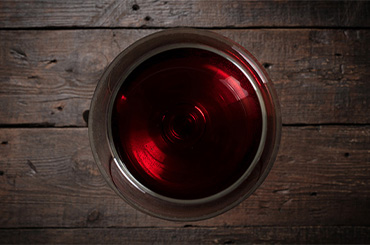For my Master of Wine dissertation, I wrote about the wine preferences of customers in top Tokyo restaurants. In Japan, culinary excellence is achieved when nothing more can be subtracted from a dish, and the ingredients are rendered to a bare essence of purity. The adage “less is more” is at play at the table, and that extends to wine styles, with a leaning towards subtle expressions.
I call these “wines that don’t get in the way”, and for me, they are the most important.
They neither clash with the ingredients on the plate, nor intrude with conversation and appreciation of the holistic experience of a meal: achieving overall harmony is crucial, yet too often forgotten.
That is not to say that these wines are anodyne or flavourless. They coax appreciation through texture rather than taste alone. They aren’t about bombast of oak, artefact or tenacity of fruit flavour – they are about just being there to whet the palate, facilitate a meal’s deliciousness, and make one hungry for another mouthful and thirsty for another glass. These kinds of bottles tend to empty quickly because the wines in them caress rather than bludgeon the drinker.
These styles are best when drunk on the cooler side, but not chilled to the point where their subtleties can’t be appreciated – around 13°C for the whites, and 13 to 15°C for the reds.
These wines tend to be fresh, light to mid-weight, with some exceptions, and as reliant on phenolics for their structure as they are on acidity. They include wines made with the four great Italian white grape varieties of verdicchio, vermentino, fiano and greco, and better Italian whites in general. Think, for example, how easily a bottle from Italian producers Pieropan, Suavia or Inama meanders across a meal – raising an eyebrow, perhaps, but seldom shouting over any of an array of fish dishes or richer white meats.
I would also throw into the mix chenin blanc and dry, contemporary expressions of palomino. Pinot gris, too, with the caveat that it can’t be excessively rich, as so many Alsatian examples tend to be, or anaemic and made to industrial volumes, as seen with so much swill from the Veneto region of Italy. The best examples of pinot gris hail from northeast Italy’s Friuli, but Australian gris is getting better and better. Think Ocean Eight, Cannibal Creek, Lethbridge and the beguiling blend of gris, gewurztraminer and riesling from Stargazer in Tasmania. I tasted this blend recently for the Halliday Wine Companion guide, and it is among the finest Australian white wines, with gewurztraminer’s hedonism and riesling’s acidity nestled into – rather than screaming over – the fray.
Pinot noir would appear to be the chief red wine candidate in this category. More so, though, I appreciate grapes like nerello mascarese and frappato from Sicily; mencia from Galicia; cabernet franc from the better sites of Saumur, Bourgeuil and Chinon in France’s Loire Valley; grenache from cooler areas such as Gredos in Spain’s upper-central reaches, and arguably the most versatile of all, gamay.
Gamay’s spiritual home is the Beaujolais region on the outskirts of Lyon in France. 2016, ’17 and ’18 are all cracking vintages, with the number of top-quality producers on the rise. On home soils, the iconic Sorrenberg Gamay grows in stature after five to eight years in the cellar, rivalling Beaujolais’s best, while Thick as Thieves in the Yarra Valley and Bass Phillip in Gippsland also craft commendable examples of the sorts of wines that don’t get in the way, be they gamay or otherwise. Finally, an outlier: Mount Majura’s Mondeuse. This is a peppery, frisky red of such unbridled deliciousness that it deserves a place in this pantheon.
I call these “wines that don’t get in the way”, and for me, they are the most important.
They neither clash with the ingredients on the plate, nor intrude with conversation and appreciation of the holistic experience of a meal: achieving overall harmony is crucial, yet too often forgotten.
That is not to say that these wines are anodyne or flavourless. They coax appreciation through texture rather than taste alone. They aren’t about bombast of oak, artefact or tenacity of fruit flavour – they are about just being there to whet the palate, facilitate a meal’s deliciousness, and make one hungry for another mouthful and thirsty for another glass. These kinds of bottles tend to empty quickly because the wines in them caress rather than bludgeon the drinker.
These styles are best when drunk on the cooler side, but not chilled to the point where their subtleties can’t be appreciated – around 13°C for the whites, and 13 to 15°C for the reds.
These wines tend to be fresh, light to mid-weight, with some exceptions, and as reliant on phenolics for their structure as they are on acidity. They include wines made with the four great Italian white grape varieties of verdicchio, vermentino, fiano and greco, and better Italian whites in general. Think, for example, how easily a bottle from Italian producers Pieropan, Suavia or Inama meanders across a meal – raising an eyebrow, perhaps, but seldom shouting over any of an array of fish dishes or richer white meats.
I would also throw into the mix chenin blanc and dry, contemporary expressions of palomino. Pinot gris, too, with the caveat that it can’t be excessively rich, as so many Alsatian examples tend to be, or anaemic and made to industrial volumes, as seen with so much swill from the Veneto region of Italy. The best examples of pinot gris hail from northeast Italy’s Friuli, but Australian gris is getting better and better. Think Ocean Eight, Cannibal Creek, Lethbridge and the beguiling blend of gris, gewurztraminer and riesling from Stargazer in Tasmania. I tasted this blend recently for the Halliday Wine Companion guide, and it is among the finest Australian white wines, with gewurztraminer’s hedonism and riesling’s acidity nestled into – rather than screaming over – the fray.
Pinot noir would appear to be the chief red wine candidate in this category. More so, though, I appreciate grapes like nerello mascarese and frappato from Sicily; mencia from Galicia; cabernet franc from the better sites of Saumur, Bourgeuil and Chinon in France’s Loire Valley; grenache from cooler areas such as Gredos in Spain’s upper-central reaches, and arguably the most versatile of all, gamay.
Gamay’s spiritual home is the Beaujolais region on the outskirts of Lyon in France. 2016, ’17 and ’18 are all cracking vintages, with the number of top-quality producers on the rise. On home soils, the iconic Sorrenberg Gamay grows in stature after five to eight years in the cellar, rivalling Beaujolais’s best, while Thick as Thieves in the Yarra Valley and Bass Phillip in Gippsland also craft commendable examples of the sorts of wines that don’t get in the way, be they gamay or otherwise. Finally, an outlier: Mount Majura’s Mondeuse. This is a peppery, frisky red of such unbridled deliciousness that it deserves a place in this pantheon.






